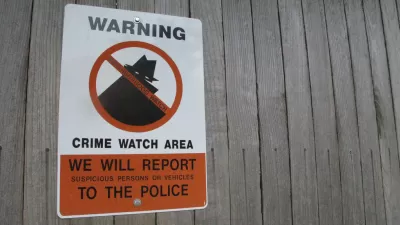Drug traffickers, growers and drug law enforcement agents are wreaking havok on the forests of Central America, where large plots of forest are clear-cut for drug crop growing and sprayed to eliminate illicit substances.
"The national parks of Guatemala and other countries have become the preferred haven of drug traffickers who usurp protected areas and burn the forest to serve their own purposes and the demands of their customers, according to Roan McNab, Wildlife Conservation Society (WCS) country director for Guatemala."
"Similar misuse of parklands has plagued Colombia since at least the 1990s, and the Sierra de la Macarena National Park there is home to some 13,000 hectares (32,100 acres) of coca plantations, according to field data compiled by the illegal-drug monitoring U.N. body the Sistema Integrado de Monitoreo de Cultivos Ilicitos. As a result, officials have targeted the park for herbicide spraying from airplanes. Of course, this indiscriminately kills both coca and forest vegetation as well as poses a risk to the area's frogs and other amphibians."
"In Guatemala, drug traffickers clear a new landing strip on average once every six months to avoid being caught. And, over the last 15 years, trafficking has eliminated half the nesting trees of the scarlet macaw. At El Mirador, the jungle-covered remains of a once flourishing Mayan city, its pending listing as a new national park will likely invite narco-traffickers to take over the home of those same scarlet macaws as well as white-lipped peccaries, jaguars and other animals."
FULL STORY: Your forest on drugs: America's cocaine habit destroys national parks

Maui's Vacation Rental Debate Turns Ugly
Verbal attacks, misinformation campaigns and fistfights plague a high-stakes debate to convert thousands of vacation rentals into long-term housing.

Planetizen Federal Action Tracker
A weekly monitor of how Trump’s orders and actions are impacting planners and planning in America.

In Urban Planning, AI Prompting Could be the New Design Thinking
Creativity has long been key to great urban design. What if we see AI as our new creative partner?

King County Supportive Housing Program Offers Hope for Unhoused Residents
The county is taking a ‘Housing First’ approach that prioritizes getting people into housing, then offering wraparound supportive services.

Researchers Use AI to Get Clearer Picture of US Housing
Analysts are using artificial intelligence to supercharge their research by allowing them to comb through data faster. Though these AI tools can be error prone, they save time and housing researchers are optimistic about the future.

Making Shared Micromobility More Inclusive
Cities and shared mobility system operators can do more to include people with disabilities in planning and operations, per a new report.
Urban Design for Planners 1: Software Tools
This six-course series explores essential urban design concepts using open source software and equips planners with the tools they need to participate fully in the urban design process.
Planning for Universal Design
Learn the tools for implementing Universal Design in planning regulations.
planning NEXT
Appalachian Highlands Housing Partners
Mpact (founded as Rail~Volution)
City of Camden Redevelopment Agency
City of Astoria
City of Portland
City of Laramie




























